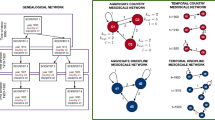Abstract
Mathematics research in India, as reflected by papers indexed inMathsci 1988–1998, is quantified and mapped. Statistics, quantum theory and general topology are the three subfields contributing the most to India's output in mathematics research, followed by special functions, economics and operations research, and relativity and gravitational theory. Indian Statistical Institute and Tata Institute of Fundamental Research are the two leading publishers of research papers. Unlike in many other fields, Calcutta publishes the largest number of papers in mathematics, followed by Mumbai, New Delhi, Chennai and Bangalore. West Bengal, Uttar Pradesh, Maharashtra, Tamil Nadu and Delhi are the leading states. Researchers from 257 institutions spread over 134 cities/towns have published 17,308 papers in the 11 years. About 92% of these papers have appeared in 877 journals published from 62 countries. Journals published in the USA, UK and the Netherlands are popular with Indian mathematicians. Of the 36 journals that have published at least a hundred papers, 20 are Indian journals of which only two are indexed in Journal Citation Reports. In all, about 38.5% of papers have been published in Indian journals, as against about 70% in agriculture, 55% in life sciences, 33.5% in medicine and 20% in physics. In the later years, there has been a moderate shift to non-Indian journals. Close to 78% of papers have come from universities and colleges and 13% from the institutions under science related departments. Almost all papers in high impact journals are physics related and most of them have come from institutions under the Department of Atomic Energy. Over 15% of the 9760 papers published during 1993–1998 are internationally coauthored. In all of science, as seen from Science Citation Index, 14% of Indian papers were internationally coauthored in 1991 and 17.6% in 1998. The USA, Canada, and Germany are the important collaborating nations, followed by France, Italy, Japan and the UK.
Similar content being viewed by others
References
V. S. Varadarajan, Mathematics in and out of Indian universities, The Mathematical Intelligencer, 5 (1983) 38–42.
R. Narasimhan, The coming age of mathematics in India, In: P. Hilton, F. Hirzebruch, R Remmert (Eds) Miscellanaea Mathematica., Berlin: Springer-Verlag, 1991, pp. 235–258.
C. S. Seshadri, Mathematics in India during the last fifty years, talk delivered at the Indo-French Seminar on History of Development of Science in India and in France, Madras, October 1992.
S. Arunachalam, S. M. Dhawan, Physics Research in India: An Analysis Based on Physics Abstracts 1992. Report submitted to the Department of Science and Technology, New Delhi. 1996.
S. Arunachalam, Mapping life sciences research in India: A profile based on BIOSIS 1992–1994. Current Science, 76 (1999) 1191–1203.
S. Arunachalam, Agricultural Research in India —A profile Based on CAB Abstracts 1990–1994. Report submitted to NISSAT, DSIR, New Delhi, 1998.
S. Arunachalam, How relevant is medical research done in India? — A study based on Medline. Current Science, 72 (1997) 912–922.
S. Arunachalam, Does India perform medical research in areas where it is most needed? National Medical Journal of India, 11 (1998) 27–34.
S. Arunachalam, R. Srinivasan, V. Raman, Science in India — A profile based on India's publications as covered by Science Citation Index 1989–1992. Current Science, 74 (1998) 433–441.
A. J. Van Raan, The Pandora's box of citation analysis: Measuring scientific excellence — The last evil, In: B. Cronin, H. Atkins (Eds), The Web of Knowledge —A Festschrift in Honor of Eugene Garfield. ASIS monograph. 2000, pp. 301–319.
A. Weill, Mathematics in India in Collected Papers, Vol. 1, pp. 129–131.
S. Arunachalam, M. Jinandra doss, Mapping international collaboration in Asia through coauthorship analysis, Current Science, 79 (2000) 621–628.
S. Arunachalam, International collaboration in science: The case of India and China, In: B. Cronin, H. B. Atkins (Eds), The Web of Knowledge —A Festschrift in Honor of Eugene Garfield (ASIS Monograph Series), 2000, pp. 215–231.
Author information
Authors and Affiliations
Rights and permissions
About this article
Cite this article
Arunachalam, S. Mathematics Research in India Today: What Does the Literature Reveal?. Scientometrics 52, 235–259 (2001). https://doi.org/10.1023/A:1017915823434
Issue Date:
DOI: https://doi.org/10.1023/A:1017915823434




